HubSpot vs Pardot
We take a close look at two leading CRM and marketing providers
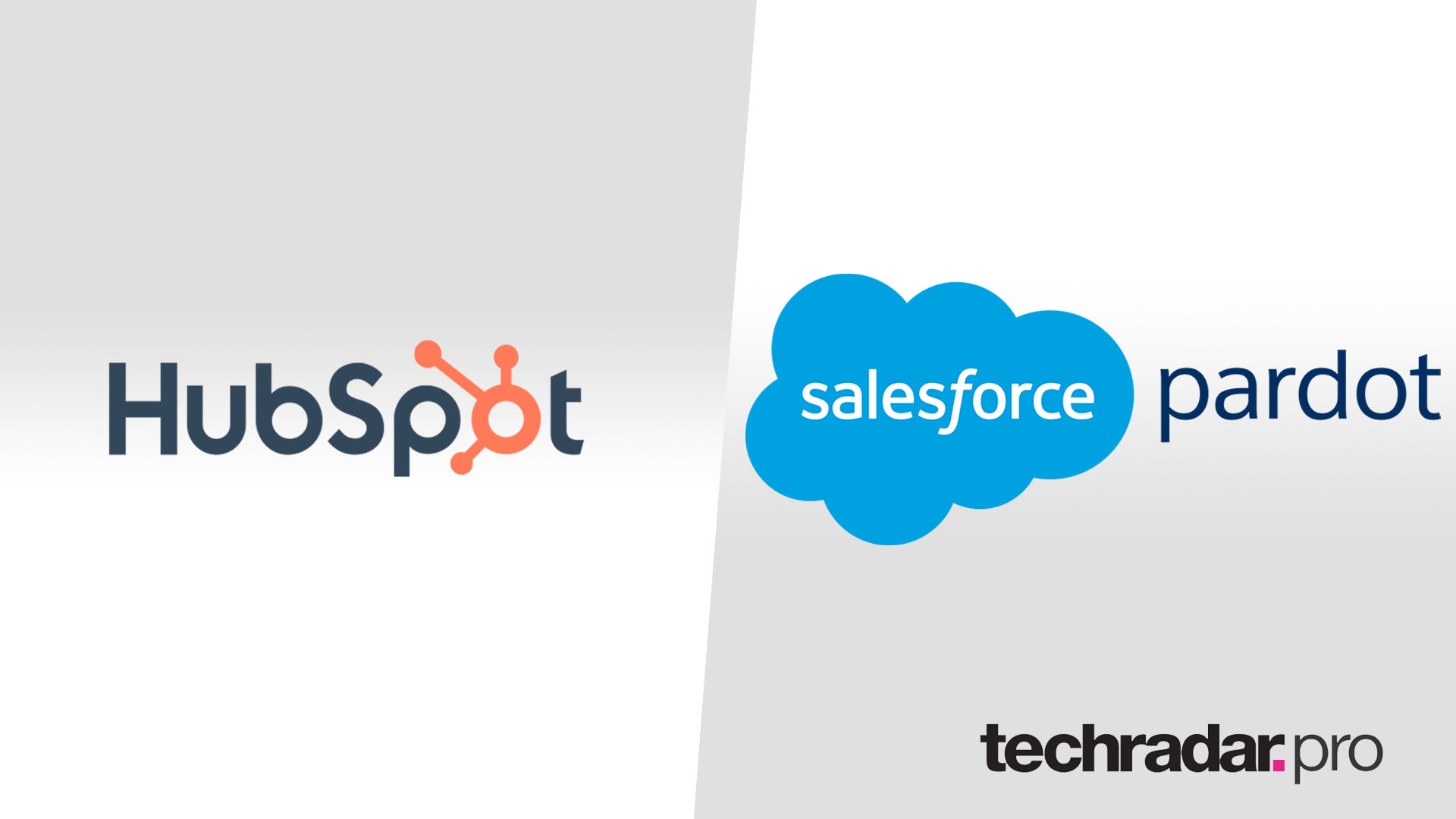
You may have already identified the best CRM software for your business, but marketing automation tools are an increasingly critical component to successful, efficient marketing teams of all sizes.
In a CRM market flooded with options, HubSpot and Pardot are two standout players. But when you’re considering HubSpot vs Pardot for your marketing automation needs, it is important to understand some key differences. Read our full HubSpot review for more detail, and our guide to B2B marketing automation to learn more about the overall category.
In this detailed comparison, you’ll learn about the major differences between these two options, and which comes out on top. We’ll explore the features that HubSpot and Pardot share, and those that are unique to each. We’ll also assess how the two measure up in terms of performance, customer support, and pricing options.
But choosing the best software isn’t just about features and pricing. It’s also about figuring out which is the best fit for your team and your marketing automation needs. This article includes everything you need to know to decide not only which tool has superior functionality, but also which is best suited to you.
HubSpot vs Pardot: Features
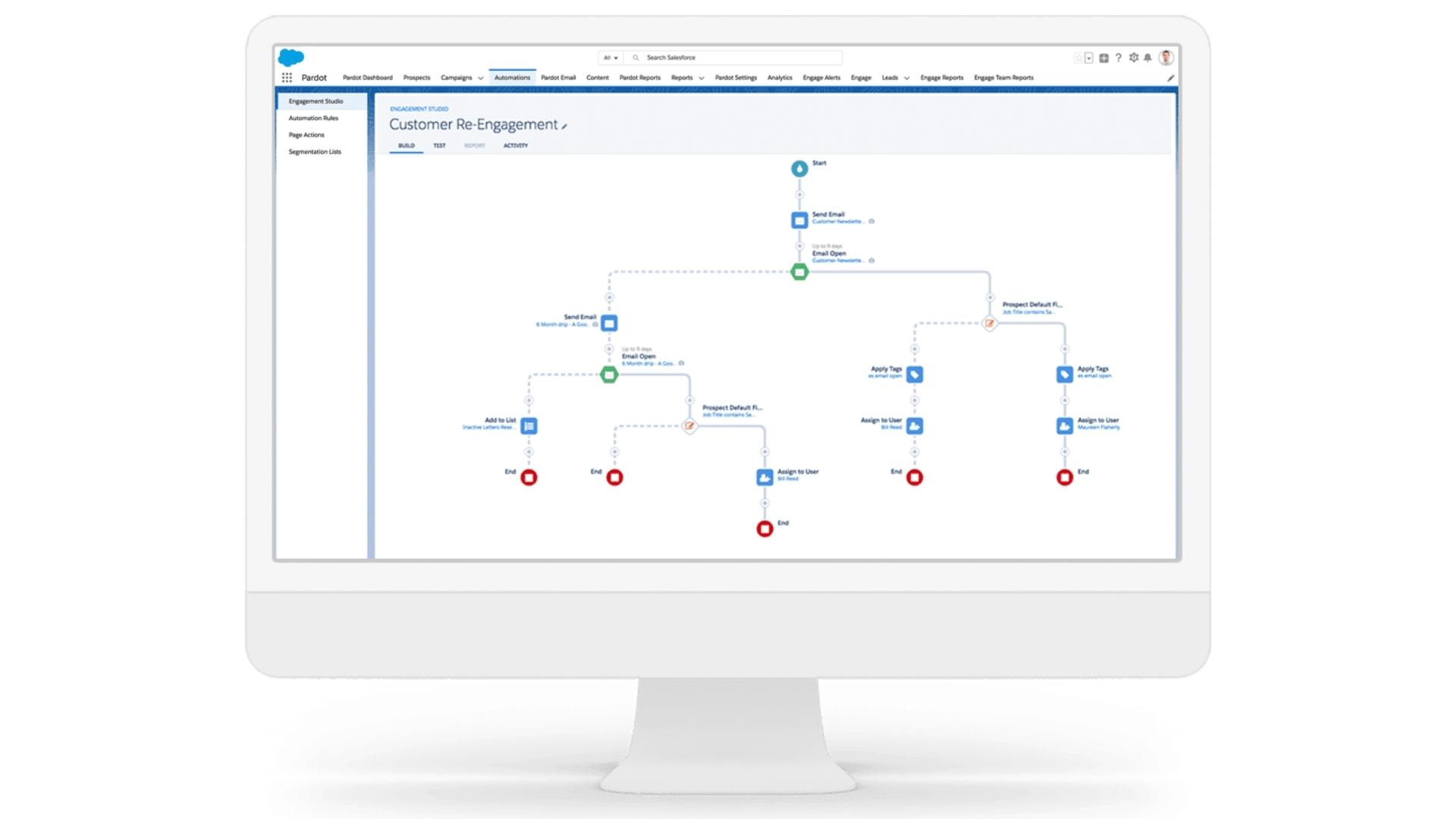
Below, we compare essential features where HubSpot and Pardot differ, including:
- Email marketing
- A/B testing
- Automation
- Lead scoring
- Paid ads
- Form builder
- Social media posting
- Content management
- Dynamic content
- Reporting and analytics
- Integrations
Both HubSpot and Pardot offer robust email marketing solutions. Users can leverage out-of-the-box templates or build custom email designs. With both platforms, the email editor is simple to use with drag-and-drop modules. Both offer the ability to use dynamic content within emails to personalize messaging for recipients.
HubSpot provides in-depth analysis on the overall health of your email sends, including bounce and open rate. While Pardot’s email health reporting is slightly less in depth, it does offer a built-in spam tester and recommendations for fixing spam issues.
Sign up for breaking news, reviews, opinion, top tech deals, and more.
Both platforms enable you to perform A/B testing on your email marketing campaigns. For example, you can test different subject lines, and monitor open rates between the two versions to see which performs best. There’s not a lot of difference between functionality in this area except a potential preference for one user interface over another.
With HubSpot, you can A/B test CTA buttons and text, landing pages, and emails. However, Pardot only offers the capability to test landing pages and emails. HubSpot has also introduced adaptive testing. This AI-based version of A/B testing enables you to automate much of it, saving you time while boosting your conversion rates.
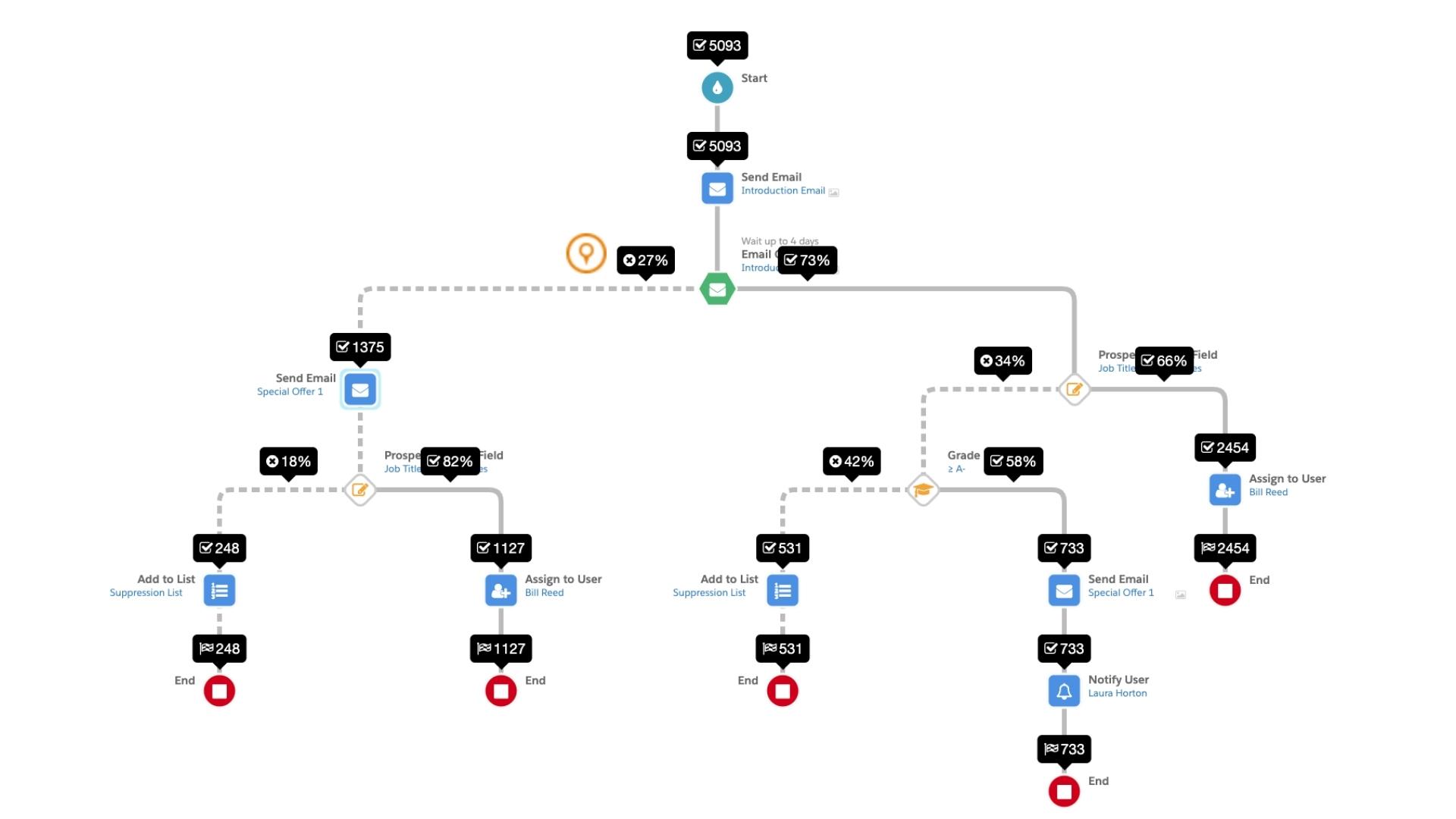
One of the most impactful components of marketing automation is the ability to automate processes and repetitive admin tasks. Both HubSpot and Pardot offer the ability to create detailed flows, so you can automate activities such as drip email campaigns to nurture leads. You can customize these flows using if/then branches, multiple trigger options, and time delays.
In Pardot, these flows are built in a complex grid format. HubSpot makes the building process more simple and accessible to users of all marketing skill levels.
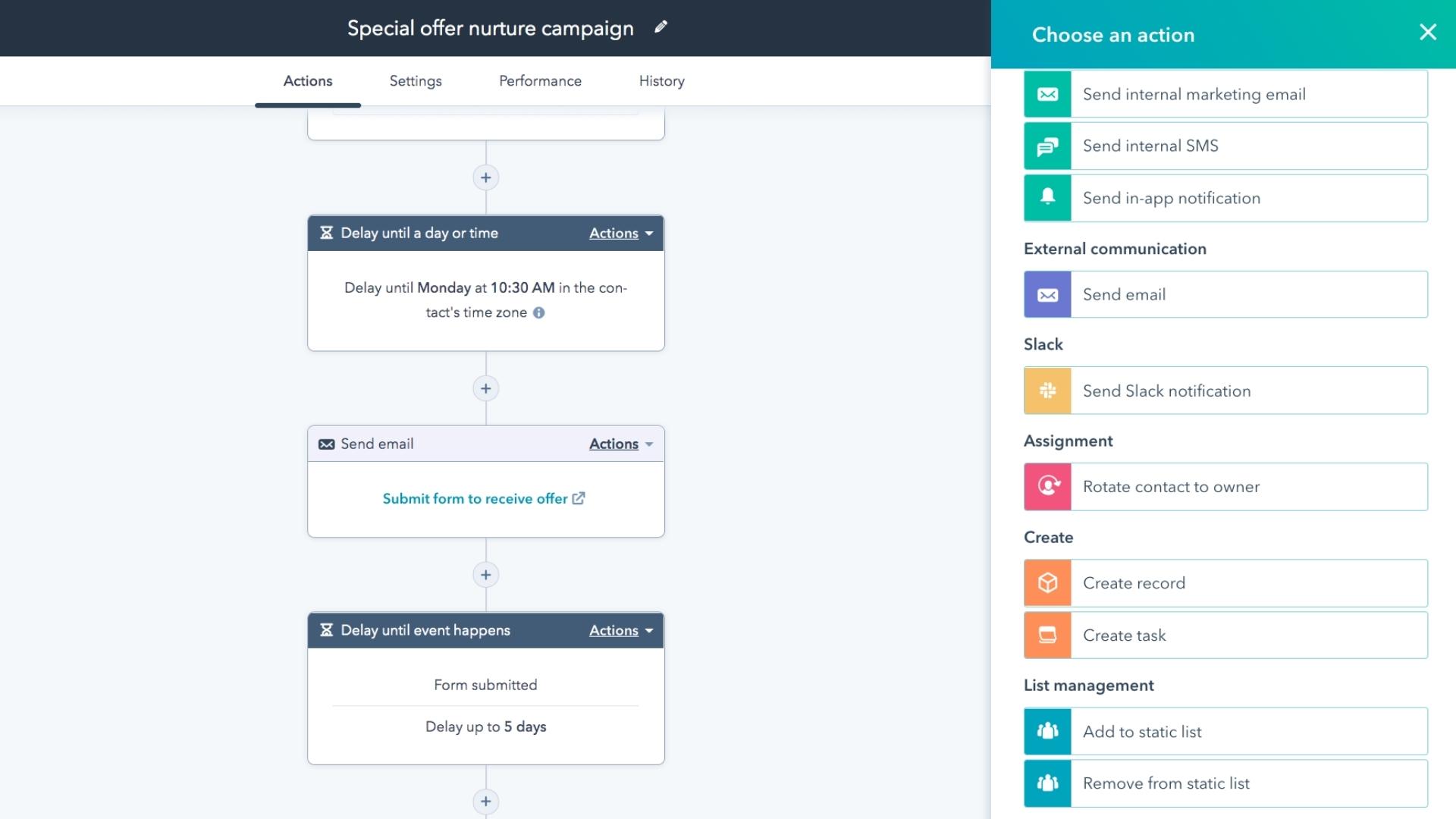
HubSpot and Pardot both provide advanced lead scoring capabilities. Lead scoring enables your marketing and sales team to identify the most promising opportunities for your business, and prioritize them accordingly. Both also incorporate AI functionality to make lead scoring more accurate and predictive over time.
HubSpot has two key advantages over Pardot in this area. Firstly, HubSpot's default scoring criteria takes a lot more engagement data into account than Pardot. With Pardot, you need to perform fairly extensive admin work to adjust the score through automation rules.
Secondly, HubSpot provides a lot more scope in terms of engagement actions that you can incorporate into your lead scoring. These actions include email engagement activities, form submissions, page views, file accessing, social media engagement, list membership and more. With Pardot, you’re limited to a significantly smaller set of criteria.
One major feature in HubSpot that is not available through Pardot is the ability to manage paid advertising across multiple ad networks, including social media channels and Google. Pardot does not offer this feature, but you can create an integration with Google Ads to pull in the data for reporting purposes.
Both HubSpot and Pardot have form builders that allow you to create and customize forms that can be embedded anywhere on your website. While the two are pretty much equal in terms of design and customization capabilities, Pardot has a slight edge.
Right from within the form builder in Pardot, you can select a range of “completed actions” that trigger when a lead submits the form. These actions include adding tags, adding the contact to a list, adjusting the lead score, notifying the assigned salesperson, and more. With HubSpot, you can automatically send an email to form submitters, but other actions need to be set up through workflows.
HubSpot and Pardot both enable users to manage their social media posting directly through their platforms. Marketing teams can save time by creating and scheduling posts across multiple channels in one place. Functionality between the two is similar, although HubSpot has an advantage as it allows post scheduling for Instagram.
While HubSpot and Pardot both offer the ability to create customized landing pages, HubSpot is the superior choice for content management. Through HubSpot, you can create and manage blog posts, host videos, and access an extensive library of free stock images. You can also integrate your HubSpot account with graphic design platform Canva to easily create and import graphics.
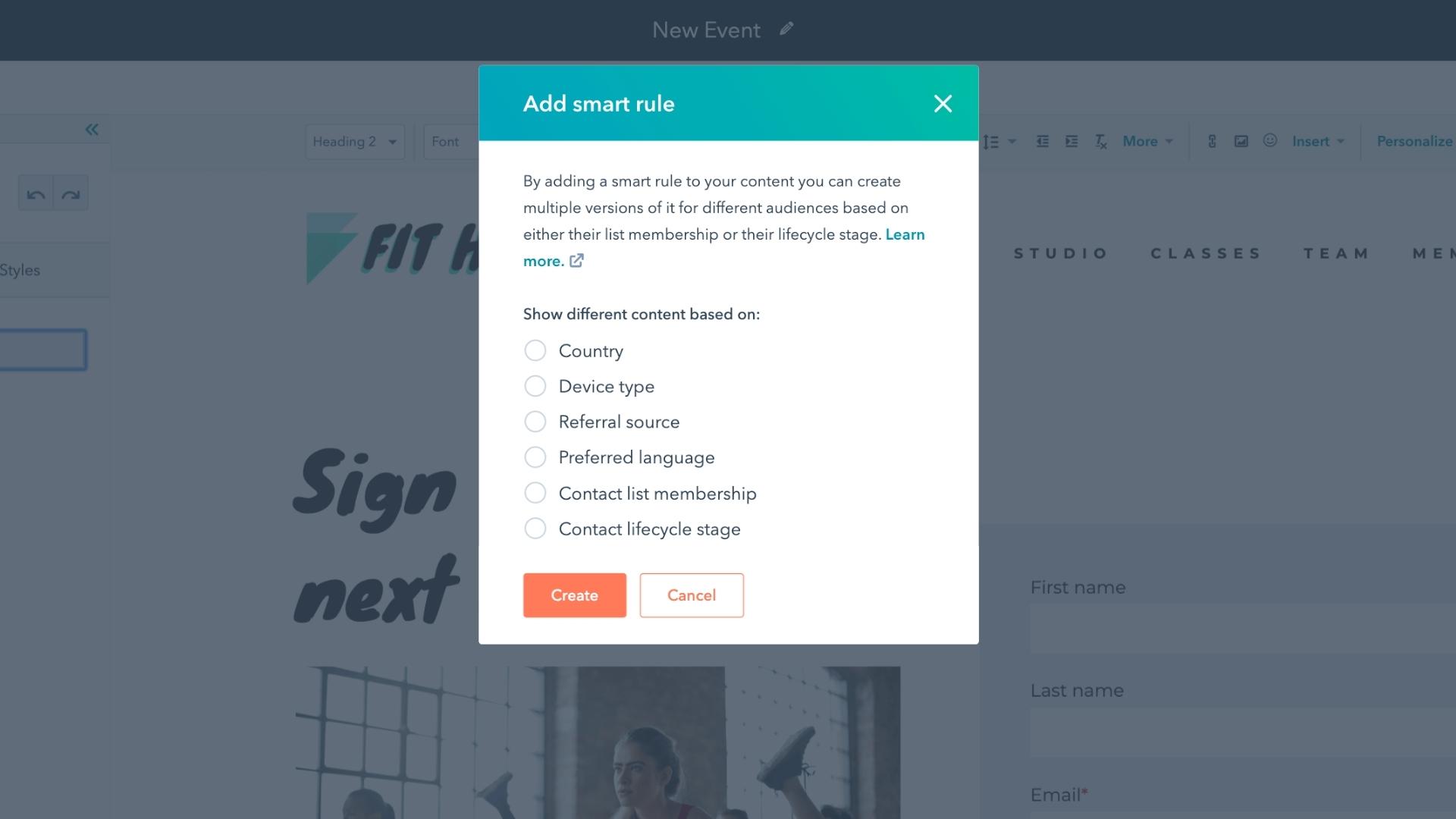
Dynamic content means presenting different content to users depending on their attributes. Both HubSpot and Pardot enable you to leverage dynamic content. For example, you might be sending a marketing email, but wish to use a different image showing a different offer depending on the lifecycle stage of a contact.
In Pardot, you can select the criteria for dynamic content based on any contact attribute you choose. But in HubSpot, you are limited to list membership and lifecycle stages. Effective dynamic content can vastly reduce your marketing team’s admin time when it comes to email marketing. So, in this case, Pardot is the clear winner.
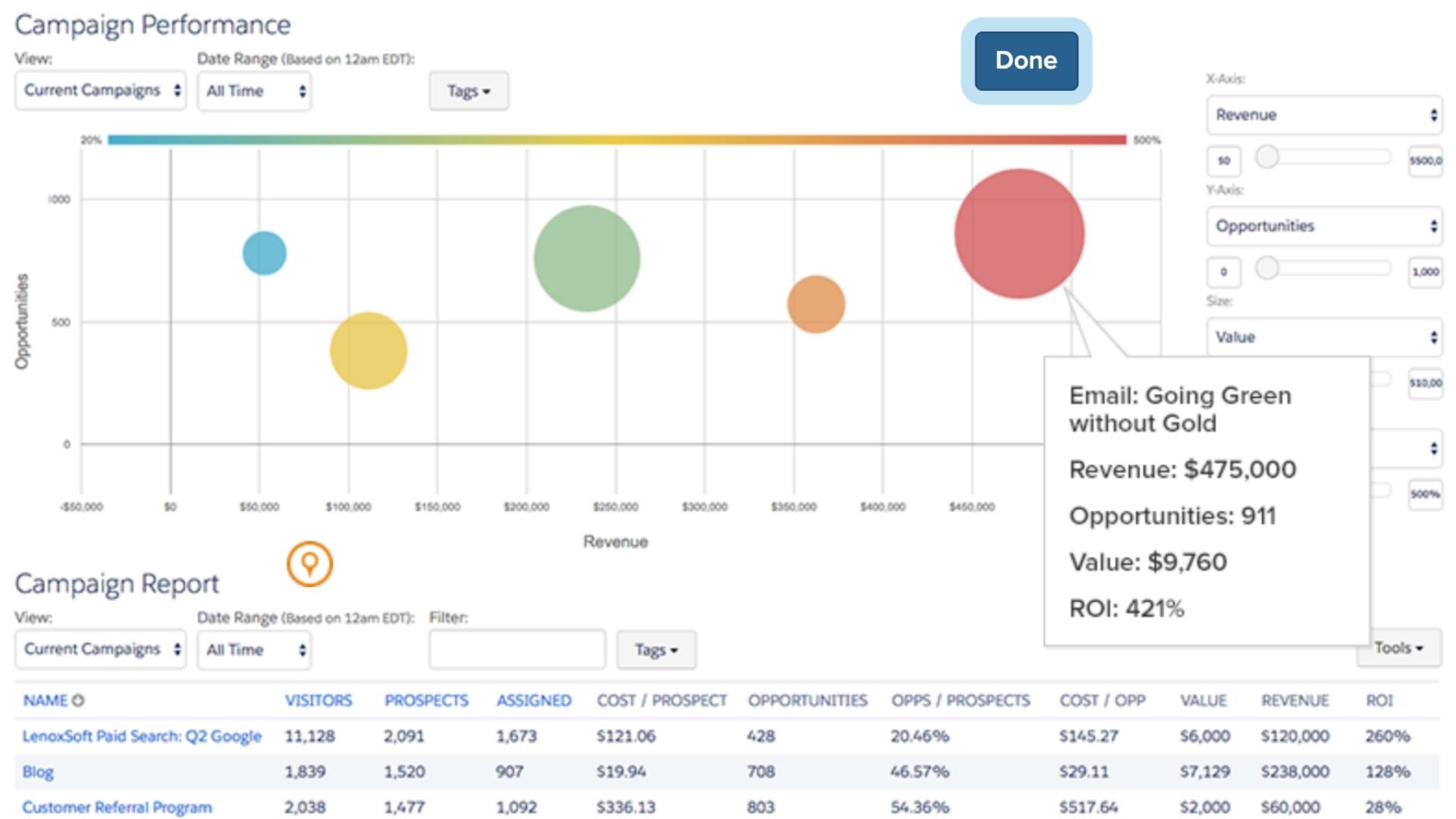
Detailed reporting and analytics (via dashboards) on all your marketing activities are available through both solutions. Where Pardot has the advantage is in the number of dashboards available at all pricing levels, and the level of customization available.
For example, custom report building isn’t available through HubSpot at all until you reach the Professional pricing tier. In contrast, Pardot offers customization at all pricing tiers. Similarly, HubSpot only provides one dashboard with its lowest pricing tier whereas Pardot provides five.
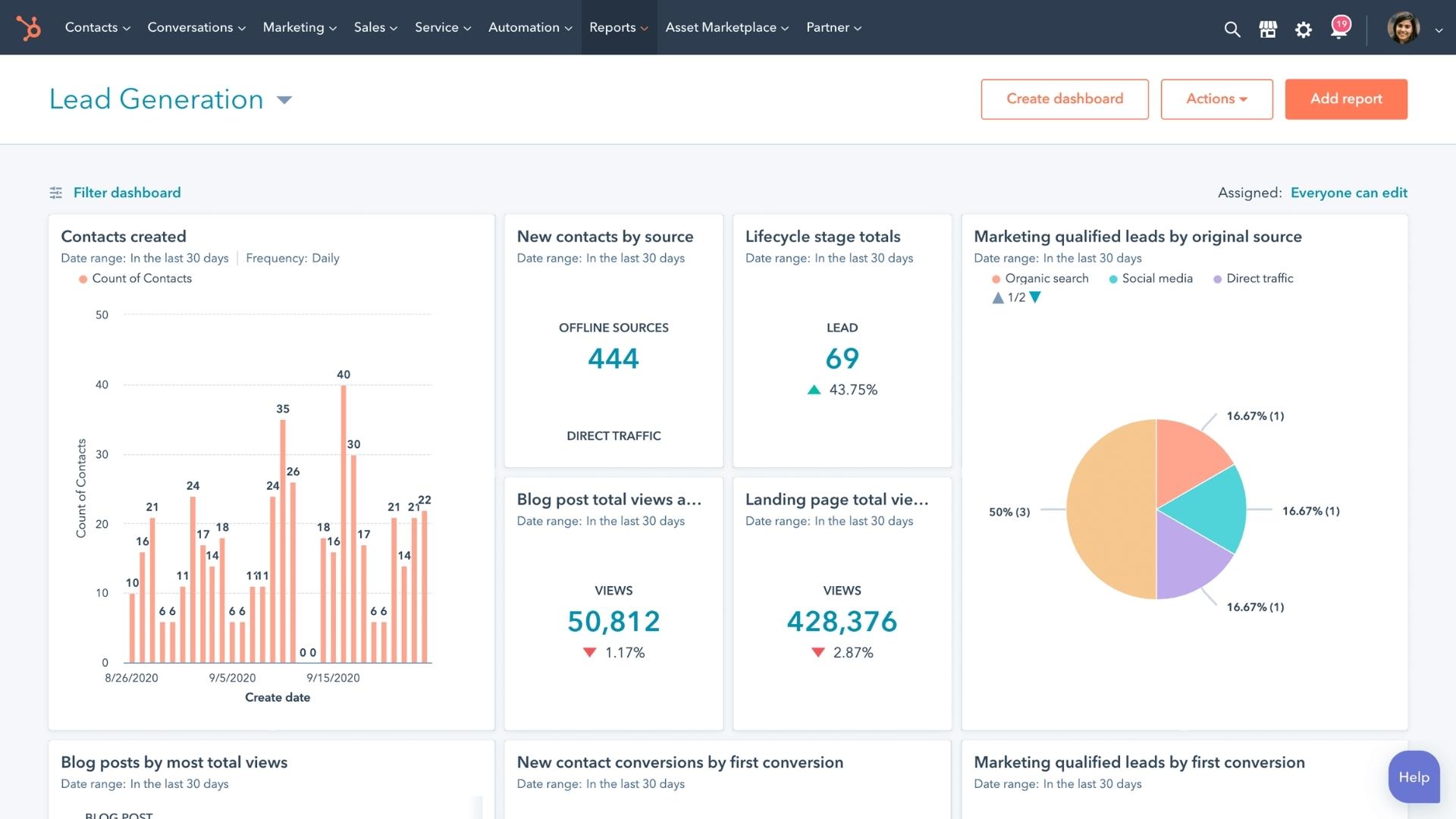
Overall, Pardot provides more advanced reporting and analytics options and customization capabilities. They’re also more widely available in the lower tiers of their pricing plans.
Finally, HubSpot offers a much wider range of integration options than Pardot. Through the HubSpot App Marketplace, you can avail yourself of hundreds of integrations to apps across marketing, sales, customer service, and finance. While Pardot offers a much lower amount of integration options, it is the most simple integration option for existing Salesforce CRM users.
HubSpot vs Pardot: Performance
We tested the stability and usability of each application, as well as the overall user experience, in terms of the following:
- Interruptions and downtime
- File uploads and storage
- Mobile responsiveness
- User experience
Examination of the status pages of both platforms shows that both experience minimal disruption and downtime. Pardot performs slightly better in this regard. The platform experienced 32 recorded disruptions of varying scales from January to November in 2021, in comparison to HubSpot’s 44 in the same period.
File uploading and storage are common to both platforms. However, while Pardot limits file sizes to 50MB, HubSpot has no limits. Nonetheless, users report difficulty uploading files beyond 1GB in size.
Both platforms automatically provide mobile responsive versions of their software, so you can manage your marketing and automation on the go.
In terms of look and feel, HubSpot and Pardot are equally well designed. However, HubSpot wins out slightly in terms of user experience. It’s a little easier to navigate, and certain tasks in Pardot, such as lead nurturing automation, are more complex than HubSpot.
HubSpot vs Pardot: Support
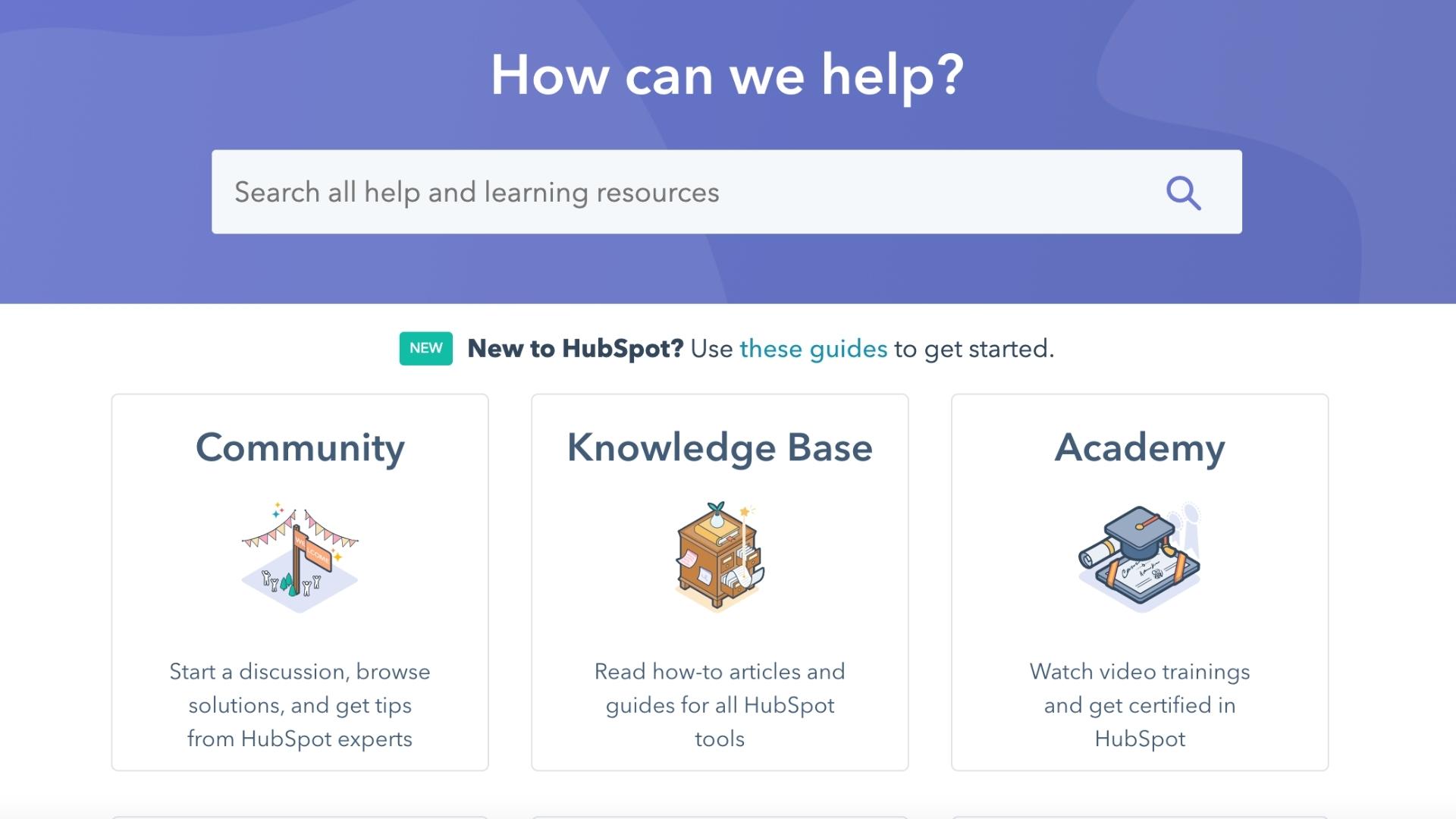
HubSpot provides extensive user support to its customers. Users can contact support through email, or leverage an in-app live chat to connect with customer support specialists with quick response times. All support requests by email or chat are stored in your user account, so you can revisit the advice whenever needed.
HubSpot also has a renowned knowledge base where customers can access a vast range of detailed support articles. If you can’t find an answer there, the HubSpot Community forum is a great place to find advice from other users and the HubSpot team. Phone support is only available for users with a Professional level account and above.
For Pardot users, email support is available 24/7, but there is no phone or live chat support. However, Pardot also has an extensive knowledge base, and provides live, weekly virtual training on specific features of the platform. You can also vote on proposed product features in the Idea Exchange hub.
Overall, HubSpot comes out on top in this instance. It provides a wider range of support options for customers, and the knowledge base is easier to navigate. Considering Pardot is a little less user-friendly for getting started, the extra support from HubSpot puts it on top in terms of customer service.
HubSpot vs Pardot: Pricing and plans
Overall, Pardot is a more expensive platform than HubSpot across all pricing tiers. With Pardot, you have to contact the sales team to discuss your package, whereas HubSpot Marketing Hub can be purchased with a credit card directly through the website (unless you want an Enterprise level plan). If you need additional functionality or to increase your contact limit at any time, you can do so within your account in HubSpot in just a few clicks.
Both platforms define their pricing tiers according to the number of marketing contacts you will need to store. With HubSpot, you can incrementally increase your contact numbers by 1,000 under each plan, until it makes sense to purchase the next one up. This functionality makes it simple to customize your pricing without needing support.
The free HubSpot plan offers many functionalities of the Marketing Hub, but with pretty limited scope. The pricing tiers then range from a basic Starter account to Enterprise level packages. In between is a Professional account that should meet the needs of most small to medium-sized organizations. It’s worth noting that some of HubSpot’s most impressive marketing automation features, such as predictive lead scoring, are only available under the Enterprise plan.
Pardot offers four separate pricing tiers for its platform. There is a lot more functionality to its most basic tier in comparison to HubSpot. But Pardot’s starting tier (known as the Growth plan) begins at $1,250 a month in comparison to HubSpot’s $45. The mid-level Professional package offered by HubSpot also carries a lower price ($800) than Pardot’s starting plan.
| Header Cell - Column 0 | HubSpot | Pardot |
|---|---|---|
| Free version? | No | No |
| Starts at | $45 a month | $1,250 a month |
| Small Business / Growth | $45 a month | $1,250 a month |
| Professional / Plus | $800 a month | $2,500 a month |
| Enterprise / Advanced | $3,200 a month | $4,000 a month |
| Premium (Pardot) | N/A | $15,000 a month |
HubSpot vs Pardot: Verdict
HubSpot and Pardot are two giants of the marketing automation world, and for good reason. Both offer powerful functionality across a wide range of features. What makes one a better choice over the other depends on your marketing automation needs.
HubSpot is the superior choice for small to medium-sized businesses who want a full inbound marketing platform. It incorporates features for inbound marketing that are not available at all in Pardot, such as content management and website blogging. You can even use the HubSpot website builder to create a website that seamlessly integrates with HubSpot's other tools.
Larger businesses who focus more on lead nurturing and customer journeys may prefer Pardot. While HubSpot provides lower and more flexible pricing, Pardot comes out on top for users who require more advanced and customizable reporting features.
For users who want to ramp up quickly, the user interface of HubSpot is easier to wrangle straight off the bat. But if you have a large marketing team and want more guidance on best practice implementation for your marketing automation, you may prefer the more involved sales and onboarding process from Pardot.
Next steps with marketing and CRM software
If you're interested in how to learn Salesforce and what Salesforce is, it's a good idea to understand what Service Cloud and Lightning are; how to set it up with Tableau; and how to integrate Slack. Find out more in our Salesforce Sales Cloud review, too.
If you're looking to acquire the best CRM for small business, find out how they can help improve customer relationships, and what the eight steps in the CRM process are. If you aren't sure whether you need one or not, we've outlined five reasons you need a small business CRM, and seven changes to a CRM for business that can drive customer growth.
Lauren holds a degree in marketing from Griffith College, Dublin, and brings more than five years’ experience as a marketing services advisor and marketing executive to her writing. An expert in SEO, copywriting, email marketing, analytics and more, Lauren has worked for the likes of the Bank of Ireland, Irish Stock Exchange, and the Yellow Pages.